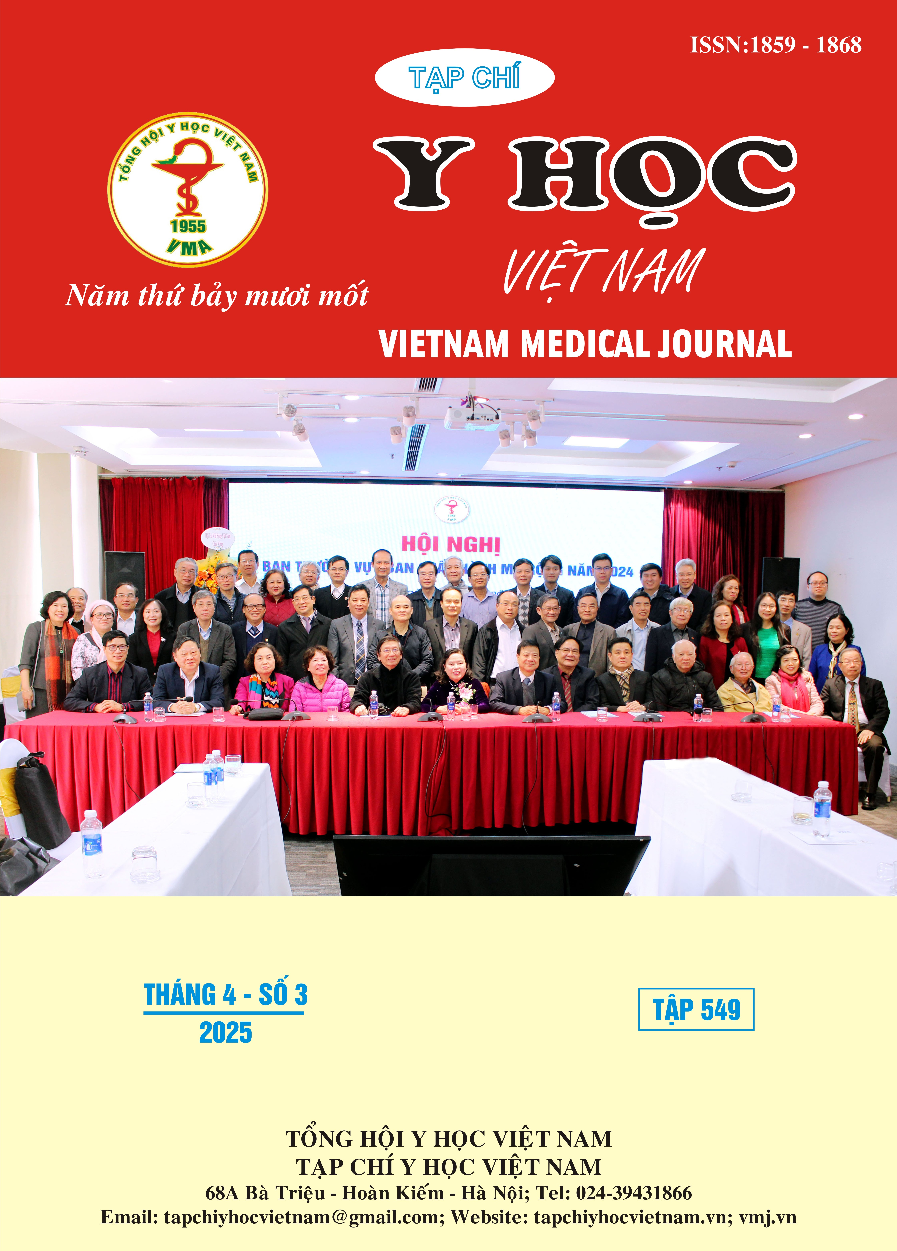THE VALUE OF SIZE, TUNICA ALBUGINEA INVASION, AND T2-WEIGHTED SIGNAL CHARACTERISTICS IN DIFFERENTIATING BENIGN AND MALIGNANT TESTICULAR TUMORS ON MRI
Main Article Content
Abstract
Objective: This study aimed to evaluate the utility of magnetic resonance imaging (MRI) features, specifically size, tunica albuginea invasion, and signal intensity on T2-weighted sequences, in differentiating benign from malignant testicular tumors. Methods: This retrospective, cross-sectional study included 47 patients with histopathologically confirmed testicular tumors (7 benign, 40 malignant). All patients underwent preoperative MRI of the scrotum. Three MRI features were assessed: maximum tumor diameter (< 16 mm or ≥ 16 mm), tunica albuginea invasion (yes or no), and signal intensity on T2-weighted images (homogeneous or heterogeneous). The diagnostic performance of these features in predicting benign versus malignant testicular tumors was evaluated. Results: Univariate and multivariate analyses demonstrated that tumor size (p = 0.000) and tunica albuginea invasion (p = 0.005) were significantly associated with malignancy. Signal intensity on T2-weighted images was not an independent predictor of malignancy (p = 0.67). Combining tumor size and tunica albuginea invasion did not improve diagnostic accuracy compared to using extension into the tunica vaginalis alone, which yielded a sensitivity of 57.5%, specificity of 100%, positive predictive value of 100%, and negative predictive value of 29.2%. Conclusion: Tumor size and tunica albuginea invasion were significant predictors of malignancy in testicular tumors. However, combining these two features did not improve diagnostic accuracy compared to using extension into the tunica vaginalis alone, which demonstrated high specificity and positive predictive value but limited sensitivity.
Article Details
Keywords
Testicular tumor, Size, Tunica albuginea invasion, Signal intensity
References
2. Increasing incidence of testicular cancer in the United States and Europe between 1992 and 2009 - PubMed. Accessed April 25, 2023. https://pubmed.ncbi.nlm.nih.gov/25030752/
3. Secondino S, Rosti G, Tralongo AC, et al. Testicular tumors in the “elderly” population. Front Oncol. 2022; 12:972151. doi:10.3389/ fonc.2022.972151
4. Tsili AC, Sofikitis N, Pappa O, Bougia CK, Argyropoulou MI. An Overview of the Role of Multiparametric MRI in the Investigation of Testicular Tumors. Cancers. 2022;14(16):3912. doi:10.3390/cancers14163912
5. Kern SQ, Speir RW, Akgul M, Cary C. Rare benign and malignant testicular lesions: histopathology and management. Curr Opin Urol. 2020;30(2): 235-244. doi:10.1097/MOU. 0000000000000715
6. Tsili AC, Argyropoulou MI, Giannakis D, Sofikitis N, Tsampoulas K. MRI in the characterization and local staging of testicular neoplasms. AJR Am J Roentgenol. 2010;194(3): 682-689. doi:10.2214/AJR.09.3256
7. Dieckmann KP, Isbarn H, Grobelny F, et al. Testicular Neoplasms: Primary Tumour Size Is Closely Interrelated with Histology, Clinical Staging, and Tumour Marker Expression Rates—A Comprehensive Statistical Analysis. Cancers. 2022;14(21):5447. doi:10.3390/cancers14215447
8. Wang W, Sun Z, Chen Y, et al. Testicular tumors: discriminative value of conventional MRI and diffusion weighted imaging. Medicine (Baltimore). 2021;100(48): e27799. doi:10.1097/ MD.0000000000027799


